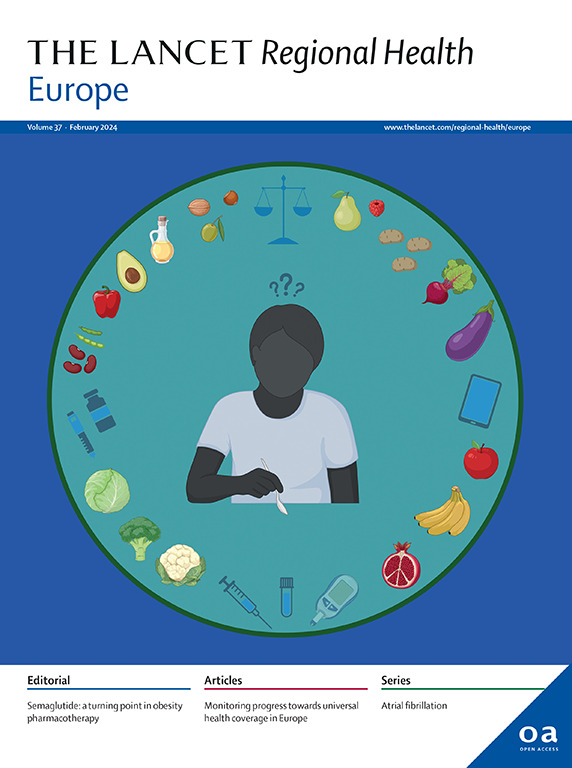2015-2023年法国住院儿童坏血病发病率趋势:基于人群的中断时间序列分析
IF 13.6
Q1 HEALTH CARE SCIENCES & SERVICES
引用次数: 0
摘要
背景:坏血病在高收入国家历史上很少见,但如今已重新成为社会经济和饮食差异的一项指标。关于欧洲儿童坏血病趋势的数据有限,特别是在2019冠状病毒病大流行以来的社会经济变化之后。这项研究分析了9年来法国儿童坏血病发病率的趋势,考察了大流行后可能出现的增长。方法:这项队列研究使用了来自法国国家医院监测系统的患者记录的中断时间序列分析。结果:共有888名儿童因坏血病住院(中位年龄11岁;四分位间距[IQR], 4-15;431名男孩[48.5%])。2020年3月的COVID-19大流行与坏血病发病率显著增加相关(累计增加34.5%;95%置信区间[CI], 12.7-56.3;P = 0.002)和严重营养不良(累计增加20.3%;95% ci, 10.7-29.9;p解释:本研究发现,与通货膨胀和社会经济不稳定有关的covid -19后坏血病和严重营养不良显著增加,强调迫切需要为高危儿科人群提供有针对性的营养支持。资金:没有。本文章由计算机程序翻译,如有差异,请以英文原文为准。
Scurvy incidence trend among children hospitalised in France, 2015–2023: a population-based interrupted time-series analysis
Background
Scurvy, historically rare in-high income countries, has re-emerged as an indicator of socioeconomic and dietary disparities. Limited data exist on scurvy trends among European children, particularly following socioeconomic changes since the COVID-19 pandemic. This study analysed scurvy incidence trends among French children over a nine-year period, examining potential post-pandemic increases.
Methods
This cohort study used an interrupted time-series analysis of patient records from a national hospital-based French surveillance system. All children aged <18 years hospitalized with scurvy and malnutrition from January 2015 to November 2023 were included. The monthly incidence of hospitalized scurvy per 100,000 children was analysed using a segmented linear regression model with autoregressive error. Incidence of hospitalization for malnutrition was analysed as secondary outcome and for urinary tract infection and vitamin D deficiency as control outcomes.
Findings
A total of 888 children were hospitalized with scurvy (median age, 11 years; interquartile range [IQR], 4–15; 431 boys [48.5%]). The COVID-19 pandemic in March 2020 was associated with a significant increase in scurvy incidence (cumulative increase, 34.5%; 95% confidence interval [CI], 12.7–56.3; p = 0.002) and severe malnutrition (cumulative increase, 20.3%; 95% CI, 10.7–29.9; p < 0.001). The increased incidence of scurvy was correlated with the rise in the consumer price index. In contrast, no change was found for the two control outcomes.
Interpretation
This study identifies a significant increase in scurvy and severe malnutrition post-COVID-19, associated with inflation and socioeconomic instability, emphasizing the urgent need for targeted nutritional support for at-risk paediatric populations.
Funding
None.
求助全文
通过发布文献求助,成功后即可免费获取论文全文。
去求助
来源期刊

Lancet Regional Health-Europe
Multiple-
CiteScore
19.90
自引率
1.40%
发文量
260
审稿时长
9 weeks
期刊介绍:
The Lancet Regional Health – Europe, a gold open access journal, is part of The Lancet's global effort to promote healthcare quality and accessibility worldwide. It focuses on advancing clinical practice and health policy in the European region to enhance health outcomes. The journal publishes high-quality original research advocating changes in clinical practice and health policy. It also includes reviews, commentaries, and opinion pieces on regional health topics, such as infection and disease prevention, healthy aging, and reducing health disparities.
 求助内容:
求助内容: 应助结果提醒方式:
应助结果提醒方式:


